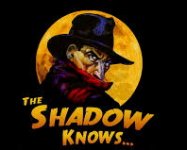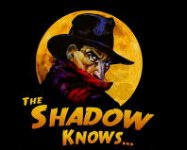Dan I shared a diagram with you previously where I plotted out 9 shots along the same string on a 9ft table. I took the lines and extended them through the center of the cue ball back through the cueball facing the shooter. The distances away from the cue ball were between 2.5 to 8.5 feet and the angles were in 5 degree increments from 15 to 85 degrees. The CTE line and the ACTUAL GB CENTER line was plotted and then the observation was made that those lines, the CTEL and the GBCL were separated by a distance of between .07mm and .4mm at the most.
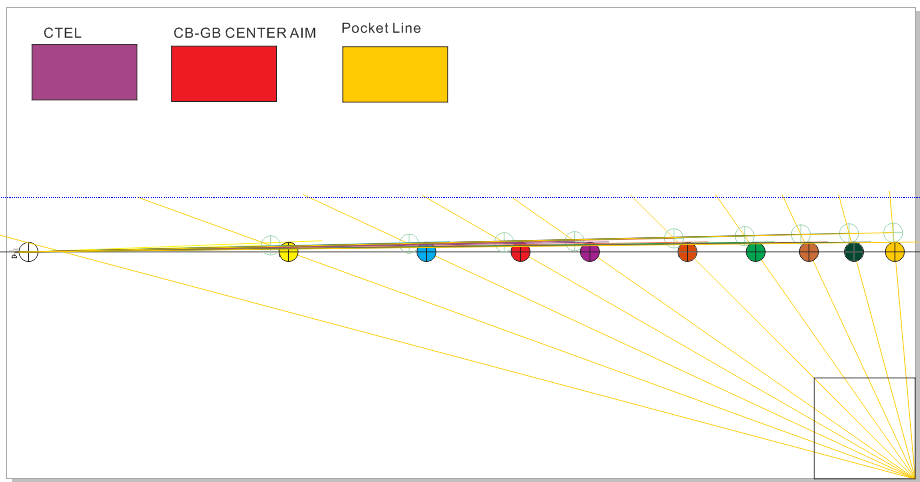
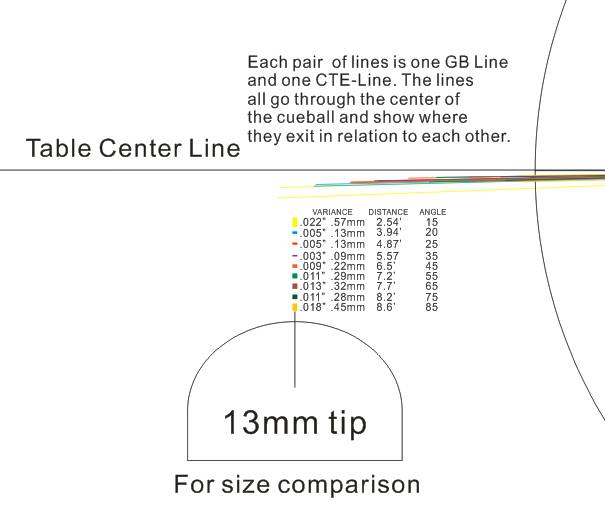
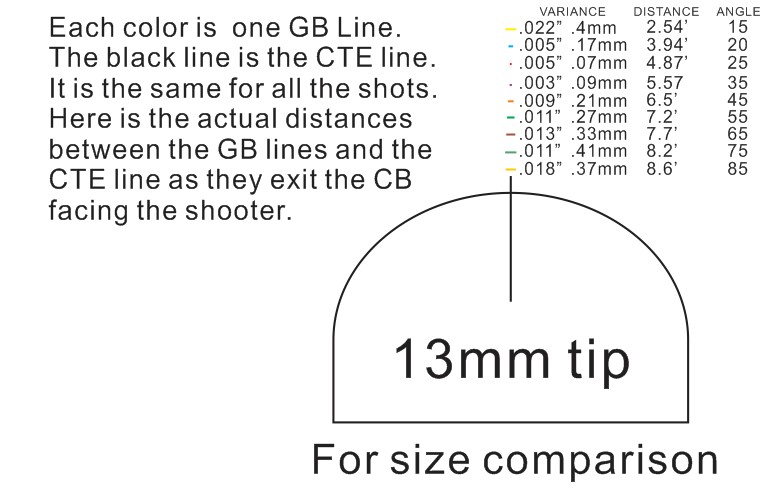
What does that data mean? Well for one thing it means that I know it and you don't because you simply don't care enough to even learn how to use the system much less spend time plotting out the various references to see what sorts of data points come up. But for me it means that by virtue of using NO OTHER REFERENCE THAN THE CENTER TO EDGE LINE the shooter would place his body in a position where he was looking at the center of the cue ball facing him and be no more than .4mm (that is less than half of a millimeter) away from the actual ghost ball line AND he would know in what direction that GB line would be in AWAY from the CTE Line.
That means that the shooter's body would literally be a tiny tiny shift away from the actual precise shot line by virtue of using no other reference than the CTE line.
Thanks for the reply. Let me address a couple of things, and then I hope to be done with these conversations.
Regarding the diagram above: Your interpretation of the results is flawed. I know you don't want to hear this, and will argue strongly against it, but if you take a step back and actually think about what I'm saying, maybe you will agree. The diagram you made uses the center of the cue ball as the origin for your two lines that go to the CTE line and to the ghost ball line. The two lines intersect at the center of the cue ball. At one end, where the object ball is, the two lines are separated by close to a half ball diameter (the sharpest angled shot) while at the other end, where the two lines exit the cue ball, the lines are very close together.
The fact that the two lines exit the cue ball close together is meaningless. Why? Well, the direction the cue ball travels does not depend on the contact point on the cue ball. It depends on the angle of the cue itself. A more accurate diagram would be to start your lines from the contact point on the cue ball. In that case, all the lines would converge at a single point on the back of the cue ball. Every shot has the same contact point - center cue ball. The difference from one to the next is simply the amount of pivot on the cue itself. (Of course there are considerations of the tip being rounded and the ball being rounded and the contact point being more of a patch than a point, but you get the idea).
Next, I wanted to push you to answer the central question as far as you could, and I think you've done that. In my opinion, you cannot answer the question, and I think we both know that your explanations are more like grabbing at straws. I appreciate the attempt and I promise not to keep harping on this stuff. I had not posted here in a long time when one day you posted a video of Stan on my youtube page. I noticed that Stan had been practicing his curtain shots as evidenced by the chalk marks on the table. You guys got all upset and then Stan admitted he had been practicing the shot before taking the video in which he definitively states that he made the shots "on the first try after setting it up." OK, fine. Next you make a long video to answer my question, which I actually was happy to see. Unfortunately, and we can agree to disagree, you did nothing more than repeat that it just works... Sorry, that's not an explanation.
Finally, my position is that if CTE helps some people like yourself, then great. I believe most supporters here have rose colored glasses when extolling the vitues of CTE - making crazy shots all over the table with no effort. OK, we can all do that, sometimes, but if it worked that great then you should all be on the tour.
I've used this analogy before: CTE might work with some subconscious adjustment at some point in the process, or it might simply be done by adjusting the pivot. What I mean is that in ghost ball aiming, you keep your stroke the same but you vary your aim point. For instance, if I have a 30 degree shot, I'll aim at the half ball hit. If the shot is a little thinnner, I'll aim just outside of the half ball hit. In both cases, I am stroking the cue straight through without any pivoting. The only thing I am changing is the aim point.
In CTE, on those two shots, let's say I am aiming with the CTELA perception. In both shots, I am now aiming at the same exact spot - the place where the CTELA perception tells me to aim the cue. But this time, I am not stroking straight through like I did above. This time I am pivoting the cue. I think this is probably what makes CTE work. You are changing the shot with a different amount of pivot.
In a nutshell, with ghost ball you aim at different places with the same stroke. With CTE you aim at the same place with different amounts of cue pivot. Both require experience to get good at, and both depend on the shooters knowledge gained by time at the table (some call this feel).
I don't know for sure if that's how it works, but to me it is a strong candidate. Even Stan shows signs of last second cue pivot on some of his shots, as I've illustrated before. If you want to lead beginners down a dead end by telling them this system is objective, then at least tell them the full story - the aim point is more or less objective, but the pivots are not. (Of course this begs the question, why not just learn to shoot intuitively by aiming at the correct spot in the first place rather than pivoting to get there?)
So I'll try to leave it at that. I may decide to make my own video showing what I'm talking about, but I dunno.
I'm satisfied that I have the best explanation you can provide. Now it's on to seeing what Stan comes up with in his book. He makes pretty strong claims as to his understanding. Time will tell.
Unless you want to continue discussing your shot diagram and why I think it is flawed, it is probably best to avoid arguing about all the other stuff. You can have the last word on that if you want.
